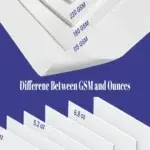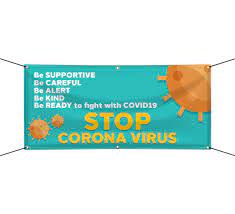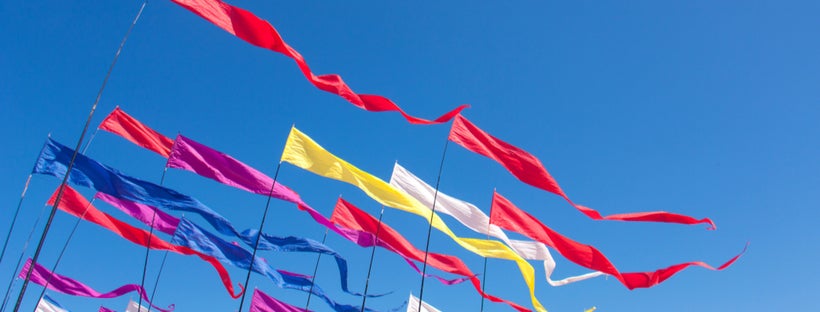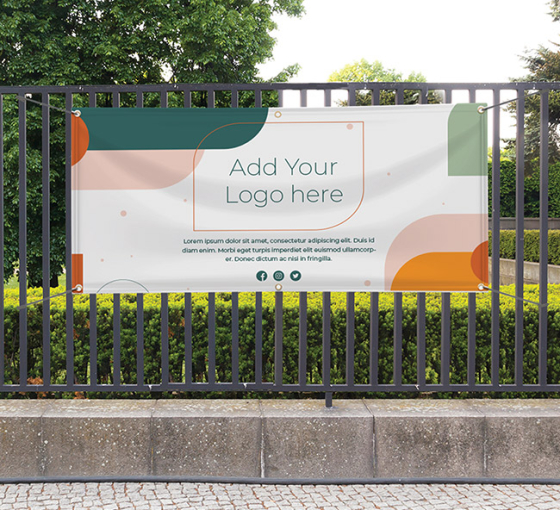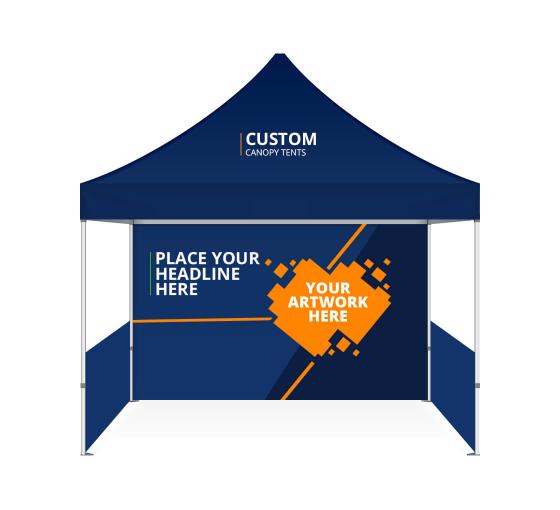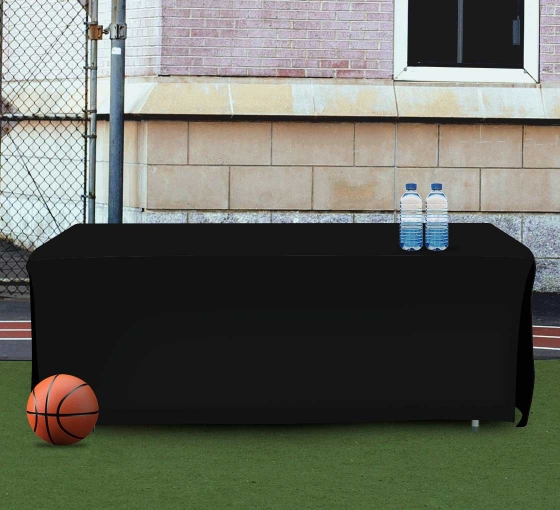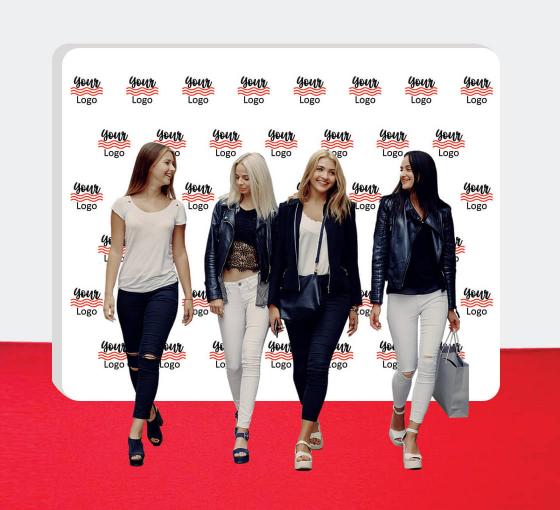When it comes to banner printing options, two materials often dominate the conversation vinyl banners and fabric banners. Whether you’re promoting a grand opening, designing a backdrop for a trade show, or setting up signage for an outdoor event, choosing the best material for banners can make or break the visual impact of your message.
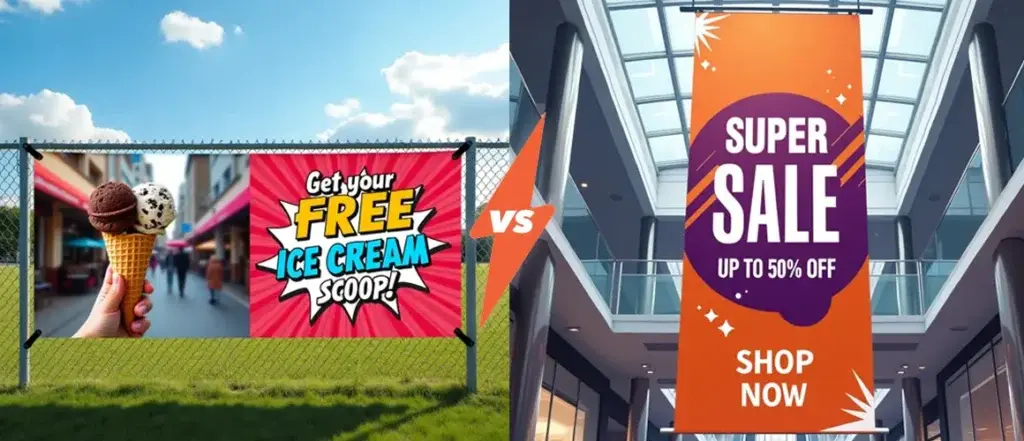
In this blog, we’ll explore the differences in quality between fabric and vinyl banners, evaluate the pros and cons of vinyl vs fabric banners, and guide you through how to choose between fabric and vinyl banners for your next campaign or display project.
Vinyl vs Fabric Banners: A Quick Comparison
Before diving into the details, here’s a side-by-side comparison of key attributes to help you quickly understand how vinyl and fabric banners differ.
| Feature | Vinyl Banner | Fabric Banner |
| Material Composition | PVC (Polyvinyl Chloride) | Polyester, Satin, or similar fabrics |
| Appearance | Glossy or semi-gloss finish; high color vibrancy | Matte finish; softer, elegant look |
| Best Use Case | Outdoor signage, storefronts, construction, promotions | Indoor events, photography backdrops, exhibitions |
| Weather Resistance | Highly weatherproof, suitable for long-term outdoor use | Limited weather resistance; best for controlled environments |
| Durability | Tear-resistant and waterproof | Susceptible to moisture, fading if used outdoors long-term |
| Weight and Portability | Heavier; requires grommets or mounting hardware | Lightweight, foldable, and easier to transport |
| Printing Detail | Crisp text and vivid colors, ideal for bold graphics | High-resolution, photo-quality prints with soft finish |
| Reusability | Long-lasting with care, but prone to creases if folded | Machine washable and easily reusable without damage |
| Light Reflection | May produce glare under bright lights | Non-reflective, perfect for photography |
| Cost Range | Generally, more affordable | Slightly more expensive per unit |
Understand the Materials: Vinyl and Fabric
What is a Vinyl Banner?
A vinyl banner is typically made from polyvinyl chloride (PVC), a durable plastic-based material. These banners are known for their resilience and ability to withstand various weather conditions. Thanks to their heavy-duty construction, vinyl banners are ideal for long-term and outdoor banner use.
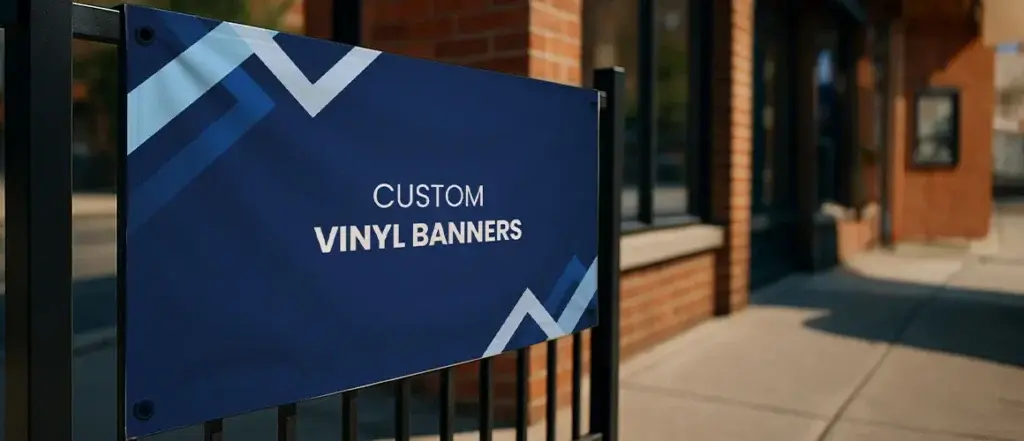
They are often coated for added protection, making them water-resistant and UV-resistant. This makes them perfect for outdoor advertising, construction sites, or storefronts where exposure to elements is inevitable.
What is a Fabric Banner?
A fabric banner, on the other hand, is usually made from materials like polyester or satin. One popular variant is the polyester fabric banner, which offers a high-quality finish and soft texture. Fabric banners are lightweight, reusable, and highly favored for indoor events, stage backdrops, or exhibitions.
They’re often used for step and repeat fabric banners, where high-resolution graphics and smooth textures are essential for media walls or photo opportunities.
Pros and Cons of Vinyl vs Fabric Banners
When comparing the two, it’s essential to look at functionality, appearance, cost, and durability. Here’s a breakdown of the pros and cons of vinyl vs fabric banners.
Vinyl Banners
Pros:
- Durability: Vinyl is resistant to wind, rain, and sun, making it ideal for outdoor applications.
- Cost-Effective: Generally more affordable for large quantities or bulk signage.
- Customizable Sizes: Easy to produce in large formats without compromising print quality.
- Bold Colors: Provides sharp, vibrant prints that grab attention from a distance.
Cons:
- Glare: The glossy surface can reflect light, making it hard to photograph or use under bright lighting.
- Heavier Weight: Requires strong mounting equipment or grommets for hanging.
- Creasing: Once folded or bent, it may retain permanent creases.
Fabric Banners
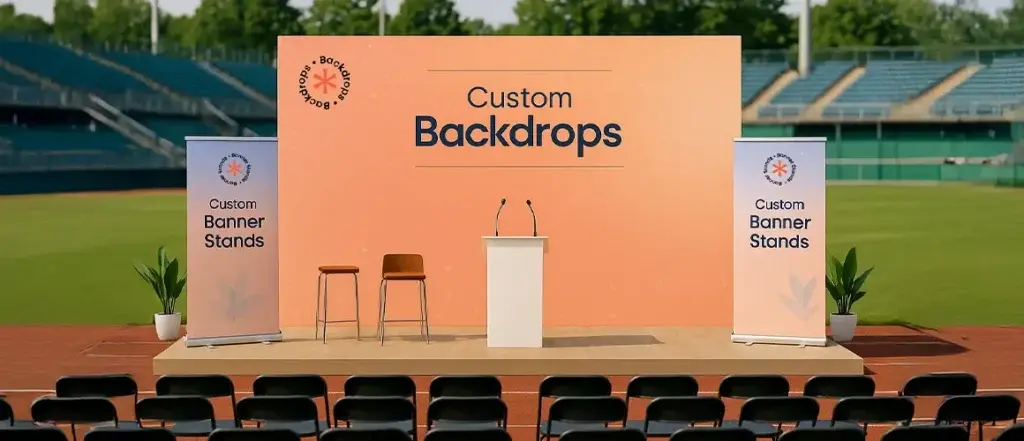
Pros:
- Elegant Look: Offers a premium appearance with a smooth, matte finish.
- Lightweight: Easier to transport, fold, and store without damaging the material.
- Non-Reflective: Ideal for photography and indoor lighting setups.
- Machine-Washable: Most polyester banners are washable and reusable.
Cons:
- Less Weather-Resistant: Fabric banners are not recommended for extended outdoor use in harsh weather.
- Higher Cost: Generally more expensive than vinyl banners.
- Slightly Less Vivid: May not hold colors as boldly as vinyl when used in direct sunlight.
Differences in Quality Between Fabric and Vinyl Banners
Quality isn’t just about the look—it also includes print clarity, longevity, and user experience. Let’s explore the differences in quality between fabric and vinyl banners in a bit more detail:
1. Print Quality
Vinyl allows for sharp, high-contrast designs with solid fills, making it ideal for simple, impactful messages. Fabric, especially polyester fabric banners, shines with high-resolution images and a softer, upscale look. For designs that include photos or gradients, fabric provides a smoother output.
2. Durability
When assessing durability, vinyl typically takes the lead. It’s tear-resistant, waterproof, and can last for months or even years with minimal care. Fabric is more vulnerable to fraying, water damage, and fading under direct sunlight, making it less suited for long-term outdoor signage.
3. Texture and Finish
Vinyl has a slick, glossy texture, which may appear less premium than the soft, matte texture of fabric. If visual aesthetics and touch are top priorities—like in indoor product launches or corporate events – fabric is the more refined option.
How to Choose Between Fabric and Vinyl Banners
Choosing between these two materials depends largely on the context of use. Here’s a guide to help you determine the best material for banners based on different scenarios:
For Outdoor Advertising, Go with:Vinyl Banner
If you’re placing banners on building exteriors, fences, or street poles, the weather-resistant nature of vinyl is unmatched. Outdoor banners need to be robust and resistant to wind, rain, and sun – exactly where vinyl excels.
For Trade Shows and Exhibitions, Go with:Fabric Banner
Indoor settings call for banners that look clean and professional. Fabric’s glare-free surface and soft texture make it a favorite for booths, conference rooms, or product display areas. Consider a step and repeat fabric banner for media-facing events.
For Short-Term Promotions, Go with:Vinyl Banner
When cost is a factor and the banner only needs to be displayed for a week or two, vinyl provides a budget-friendly solution that still packs visual punch.
For Photography and Media Walls, Go with:Fabric Banner
If you’re planning photo booths, red carpet events, or sponsor displays, the matte finish of a fabric banner avoids light reflections and provides a polished backdrop.
For Portability and Reuse, Go with:Fabric Banner
Fabric is lightweight, foldable, and washable, which makes it ideal for setups that require travel or frequent reuse.
Cost Comparison: Vinyl vs Fabric Banners
From a pricing standpoint, vinyl typically wins for affordability – especially for large or multiple banners. However, fabric offers more value in environments where appearance and reusability matter. Over the long term, washable fabric banners can be used for multiple events with minimal wear, while vinyl may degrade faster with frequent handling.
That said, pricing will also depend on:
- Banner size
- Printing complexity
- Finishing (hems, grommets, pole pockets)
- Shipping needs
It’s always smart to compare both material costs based on your unique banner printing requirements.
Customization Options: Design Flexibility
Both vinyl and fabric banners offer ample design flexibility, but how they handle graphics differs:
- Vinyl works best with bold typography, brand logos, and flat-color illustrations.
- Fabric, especially when used for a step and repeat fabric banner, handles complex graphics, photography, and gradient-rich designs better.
If your campaign relies heavily on visuals and elegance, fabric will provide a more polished presentation.
Best Use Cases for Each Banner Type
Let’s quickly match banner types to use cases:
| Use Case | Recommended Banner Type |
| Storefront Promotion | Vinyl Banner |
| Indoor Trade Show Display | Fabric Banner |
| Event Backdrops | Step and Repeat Fabric Banner |
| Construction Site Signage | Custom Vinyl Banner |
| Press Conferences | Fabric Banner |
| Street Advertising | Outdoor Banner (Vinyl) |
| Product Launch | Polyester Fabric Banner |
| One-Time Sale Event | Vinyl Banner |
Final Thoughts: Vinyl vs Fabric Banners
At the end of the day, the decision between vinyl vs fabric banners comes down to purpose, environment, and aesthetic preference. For rugged, high-impact outdoor displays, vinyl is the go-to. For sleek, professional indoor presentations, fabric banners offer unmatched sophistication.
Whether you’re creating a single custom vinyl banner for a sidewalk display or a fabric banner for a high-profile media wall, aligning your choice of material with your project’s goals will help you get the most out of your investment.
Still unsure which to choose? Try asking yourself:
- Will it be used indoors or outdoors?
- Is the event formal or casual?
- Do I need to reuse the banner?
- Is cost or appearance more important?
Answering these questions will help you navigate the wide world of banner printing options with confidence.
Written By BannerBuzz Editorial Team.






















 Posted in
Posted in 



